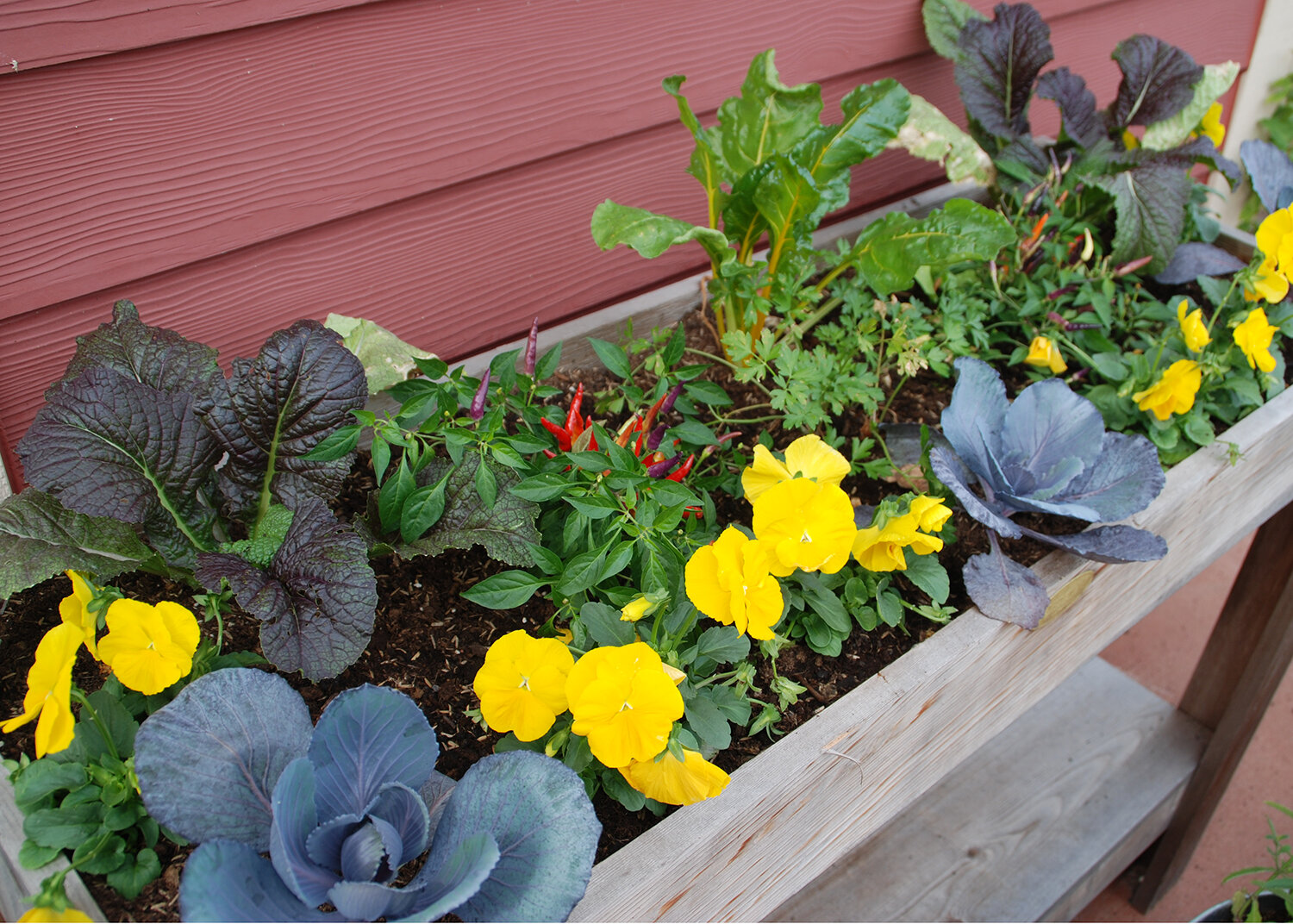Tips for Raised Bed and Elevated Gardening Success

Raised beds and elevated gardens provide easier access to gardens and can increase space available for growing vegetables and flowers. You will enjoy convenience and easy access when including one or more in your landscape or on your patio, deck, or balcony.
Providing proper care for these elevated planting spaces will ensure the biggest possible harvest and a growing season filled with beautiful flowers. Adapting planting strategies and care to fit the needs of these unique growing spaces can help reduce maintenance.
It starts with creating and maintaining a healthy growing foundation. Fill your raised beds with a quality planting mix composed mostly of topsoil and compost. Or create your own planting mix with lasagna and Hugelkultur techniques. These methods allow you to convert plant trimmings, compost, and a minimal amount of soil into a quality planting mix.
Elevated gardens are basically containers on legs and usually filled with a quality, soilless planting mix. The lighter weight makes it much more suitable for this type of gardening. Look for a product that provides drainage yet retains moisture. Both features are important when gardening in smaller volumes of soil.
Make sure you have easy access to water and your gardens have means for excess water to drain. The limited soil mass and increased exposure to wind, heat and sunlight make planting mixes dry out more quickly than in-ground beds. Always water thoroughly to encourage deep, more drought tolerant roots.
Extend the time between watering by as much as 25% with the help of a sustainable, organic product like Wild Valley Farms’ wool pellets (wildvalleyfarms.com). Made from wool waste, these pellets absorb and retain moisture releasing it when needed by the plants.
Purchase an elevated garden with wheels or add casters to the legs if you need to move your garden out of the way for entertaining. Take advantage of the added mobility to move your planter into the sun or shade as needed throughout the season.
Employ space saving techniques to maximize your gardens productivity. Space plants just far enough apart to reach their mature size. Plant quick-maturing vegetables like radishes, lettuce and beets between tomatoes, peppers and other vegetables that take longer to reach full size and start producing. You will be harvesting the short season vegetables just as the bigger plants need the space.
Get the most out of your elevated garden by spacing plants just far enough apart to reach their mature size.
Photo courtesy of MelindaMyers.com
Look for compact flower and vegetable varieties that allow you to make the most of every square inch of these gardens. All-America Selections winner Patio Choice Yellow Cherry tomato produces up to 100 tomatoes on an eighteen-inch plant. Mascotte compact bush bean and Patio Pride peas are big producers suited to these and small space gardens.
Extend your enjoyment and harvest with succession plantings. Fill vacant spaces left once a row or block of vegetables are harvested. Freshen up ornamental plantings by replacing weather worn flowers with healthy new selections. Add more planting mix along with wool pellets if needed.
Train vining plants onto trellises or other supports to save space and reduce the risk of disease. Dress them up by allowing trailing herbs and flowers to cascade over the edge of these planting beds.
Increasing growing success and reducing maintenance will make raised beds and elevated gardens a practical and productive addition to your gardening endeavors.
Melinda Myers is the author of more than 20 gardening books, including Small Space Gardening. She hosts The Great Courses “How to Grow Anything” DVD series and the nationally syndicated Melinda’s Garden Moment TV & radio segments. Myers is a columnist and contributing editor for Birds & Blooms magazine and was commissioned by Longfield Gardens for her expertise to write this article. Myers’ web site is www.melindamyers.com.






